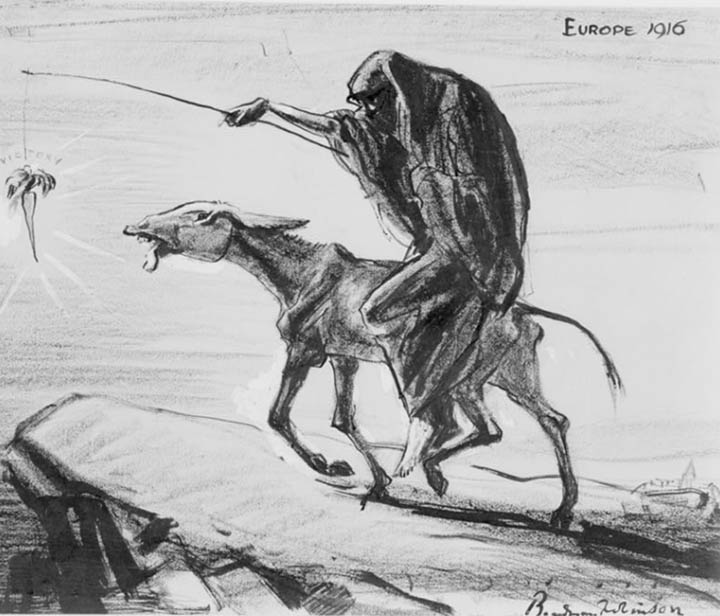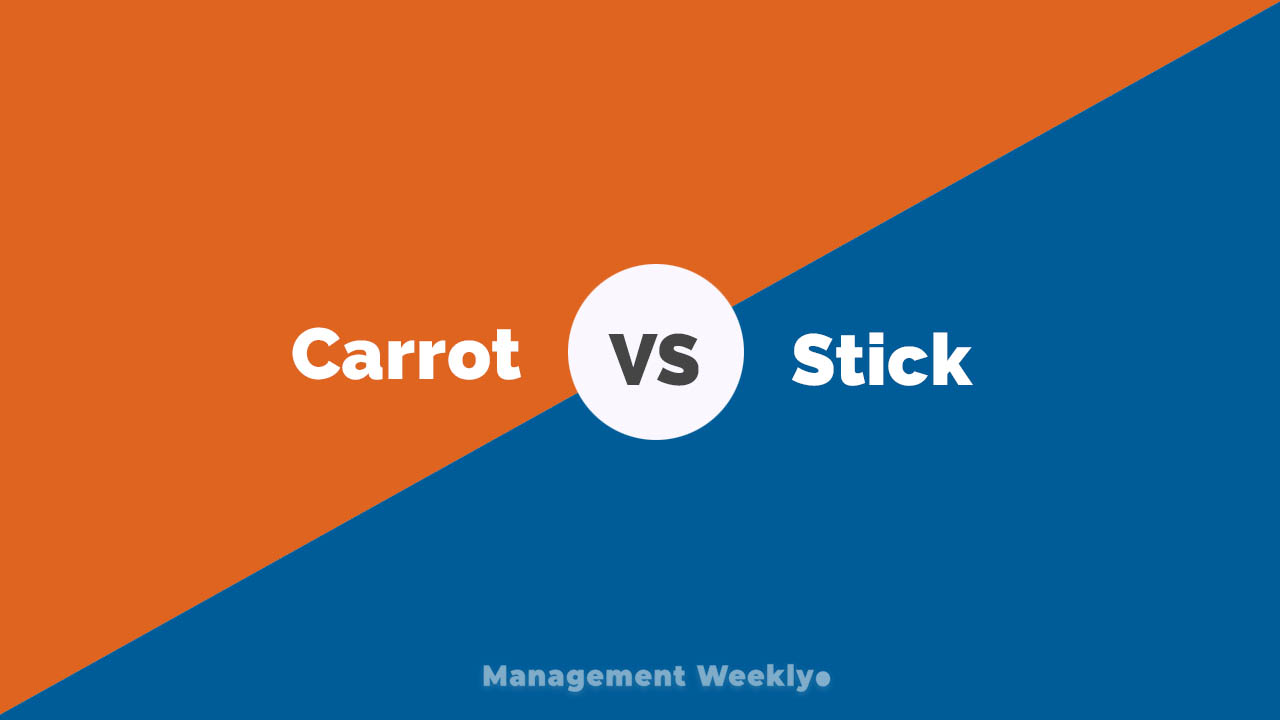The stick and carrot theory is a well-known approach. Although some people think that this is a theory of motivation, this is actually a theory of compliance. Firstly, we shall take a look at this theory and try to understand what this is about. Then we will look at some real-life examples.
What is carrot and stick theory?
The carrot and stick theory says that there are two different approaches to controlling someone’s behavior. We can either encourage someone by providing a reward for favorable behavior. We can also encourage someone by providing punishment for an unfavorable behavior. However, when we take a deeper dive into this theory, we will understand that there is much more to it than rewards and punishment.

The storm has been traced back to the 19th century. During those times, people used to race on donkeys. One of the surviving images shows that there was a unique approach taken by one of the jockeys. He hung a piece of carrot at the end of a stick and held it in front of the donkey. This encouraged the donkey to run faster than others. Meanwhile, other jockeys simply use the stick approach. They were beating their donkeys left and right in order for them to gain speed. Therefore, the jockey that used both carrot, as well as stick, was able to outperform others.
In the modern context, the carrot and stick approach refers to the practice of using different techniques like rewards and punishment to encourage a specific behavior. This term is mostly applied in the field of management. However, it is also used in the field of politics.
The theory behind this term
One of the key traits of a leader is to make people follow them. One of the pioneering works in this area was done by Amitai Etzioni. He proposed that organizations can use three different means by which they can ensure compliance by the members.
- Coercion
- Remuneration
- Normative
Coercion is a more severe form of control where the members are controlled by physical force or threat. You can also equate this with the different kinds of threats or punishments that can be meted out to an individual. Therefore, we can classify coercion as a form of ‘sticks’ approach.
The most common form of remuneration can be money. Money is a powerful motivator and controller of behavior. At the most basic level, the salary of the employees is dependent on the organization. If the organization removes someone from their payroll, that would lead to financial hardship. When an employee behaves in a manner that is favorable to the organization, the organization rewards them with higher remunerations an increase in salary or an increase in position.
Finally, we come to the normative form of control. This type of form is more symbolic in nature. Here we see that people are controlled by their loyalty or affection towards their organizations. People who are more compliant are typically regarded at a higher level than those people who are rebellious in nature. This in turn informs people’s behavior and keeps them in control.
Punishment vs Rewards
Not all punishments are equal in nature. Some of the punishments may be seen as a severe threat, while others can be neglected. In this regard, there are two different factors that can increase the power of punishment.
- Severity of punishment – When we perceive that the punishment is going to be severe, we have got higher motivation to comply.
- Certainty of punishment – Similarly, when we see that there is a higher probability of getting punished after the crime is caught.
On the other hand, rewards are generally considered to be a more positive approach towards extracting higher performance. It does not just help people comply; it also keeps them motivated. However, we should also keep in mind that only rewards can get ineffective. Therefore, most managers use a combination of rewards and punishments. The most common benefits of reward are as follows:
- Improvement in performance.
- Increase in productivity.
- Higher creativity.
- Higher compliance.
Why do we need carrot and stick theory?
There’s a popular theory in management called the agency theory. This theory states that there are two kinds of entities. The first entity is called the principal. The second entity is called the agent. In an organizational context, the principle is the organization, and the agent is the member of the organization that has been hired to do some specific job.
As per this theory, these members or employees will act to maximize their own benefits. This comes from the self-serving nature of any human being. Whenever they face a certain scenario when they have to choose between personal wellbeing and organizational wellbeing, they will choose personal wellbeing. Therefore, the use of sticks and carrot theory has been suggested. The provision of rewards makes the agent align their personal goals with the organization because they are getting some form of personal benefit in doing so. At the same time, punishments can deter people from some activity as it is personally harmful to them.
The simplest example of this can be an employee who has been hired to sit as the security guard at the gate. The guard knows that if he is away from that post for long, then his job can be jeopardized. Therefore, he will ensure that he does not leave the post unattended. This thread to the job is like a punishment that will ensure that he diligently sits at the place. He only leaves when he sees that there is some other guard present at the gate.
Another example of this can be a sales representative for a company. The sales representative has been offered a cut from the total sales that he brings. This incentive or reward will ensure that the employee puts in extra effort to sell the products.
Deeper understanding
You must have heard about the term intrinsic motivation. It is extremely important to understand it in this context. Chen et al. (2012), has discussed, the application of stick and carrot theory in the context of policy compliance. They have stated that motivation can have a continuum between autonomy and control. When the motivation is autonomous it means that it is derived from a person’s own interest. This type of motivation is also called intrinsic motivation.
One of the points of criticism of the stick and the carrot approach is that this approach touches upon the controlled aspect of motivation only.

Because of this bifurcation that we can find certain limitations to the stick and carrot theory. Firstly, we see that there are many limitations to the monetary rewards for the employees.
- Monetary rewards are typically short lived. They have a temporary effect and therefore when they are removed, the effect is also gone.
- It has also been seen, then monetary rewards can improve the quantity, but they don’t affect the quality of output.
Autonomous motivation
Therefore, we go back to the self-determination theory. This theory explains where does motivation comes from. It says that there are three basic needs that need to be fulfilled. The first need is the need for relatedness or social affiliation. The second need is the need for competence or personal efficacy. The third need is the need for autonomy or self-reliance.
Controlled motivation
Let us go back to the stick and carrot approach. We can look at it as a form of control motivation. The basic mechanism of control motivation works by working on certain fears and aspirations of individuals. Some of these aspirations are highlighted below:
- Fear of punishment.
- Guilt.
- Reward for good behavior.
- Uneasiness of doing something wrong?
- Personal gains.
- Expected returns and reciprocity.
- Pressure and coercion
Therefore, we can say that controlled motivation that is conceptualized as the stick and carrot theory has got some major drawbacks. At least contemporary management looks at it with an eye of skepticism. Firstly, it reduces the overall motivation of an individual. Any motivation that is brought about externally or controlled manner will not sustain for long. Secondly, it also lowers the performance. It has been seen that rewards or punishments can work well in the short term, but they do not work well in the very long term. On the other hand, intrinsic motivation has been seen to provide much better results in some contexts. Thirdly, it also leads to a resentful environment in the workplace. Employees always feel that they are being monitored and assessed. It feels like sitting for an exam. Also, the concept of reward and punishment makes some team members superior to others. This leads to conflicts in the workplace. Lastly, it also ends up making people unhappy. It has been seen that this kind of work structure can reduce the well-being of individuals and stress them out.
What is better than the carrot and stick approach?
- Research shows that feedback for improvement is much more important. Then the concept of rewards and punishment.
- A good manager follows the old adage ‘praise publicly, criticize privately.
- You can also plan to establish a healthy work environment by encouraging team goals.
- The personal goals of the employees need to be aligned to the professional goals. This has to be worked out by the manager by sitting down and understand the perspective of their subordinates.
- It’s also imperative to understand the importance of job ownership. It has been seen that employees who have a greater ownership in what they’re doing also perform better.
- Finally, there should be a clarity about the task that someone has to do. At the same time, there needs to be clarity about the reward that is associated with that task. Sometimes stick and carrot approach fails because the a person may lack clarity about these.
